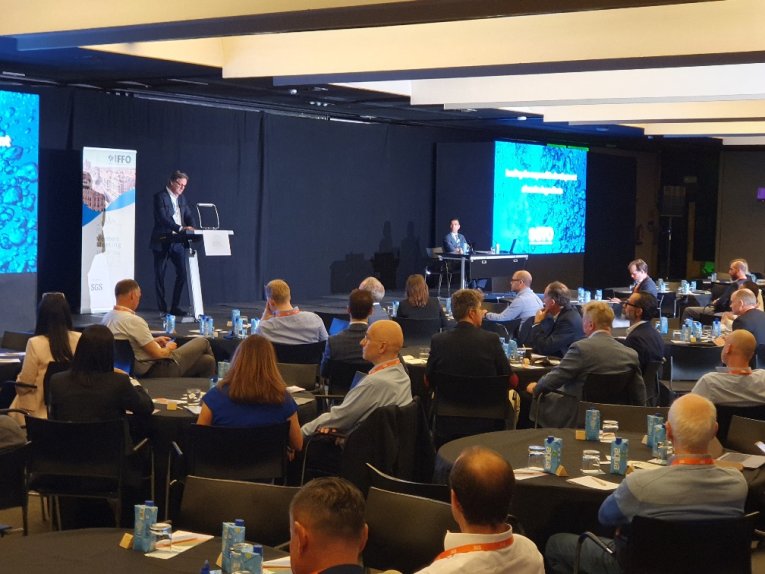
IFFO’s Members Meeting in Madrid has been attended by 220 delegates from 29 countries. The event was kicked off by IFFO’s Director General, Petter Martin Johannessen: “Marine ingredients are central to every discussion on feed because of a combination of factors, among which: growing nutritional needs, demands for improving the food production system’s carbon footprint; and constant progress on assuring traceability and responsible practices. Looking at each of these factors, marine ingredients check all the boxes: a stable global volume of supply, an unmatched nutritional package, a very low carbon profile compared to other feed ingredients and the highest certification credentials, at 50% of global production.”
IFFO’s President Gonzalo de Romaña’s discussed the sustainable growth of aquaculture and the potential of new protein sources to support this growth, complementing marine ingredients. This important debate was explored later during this conference.
Changes in the feed sector: a global overview
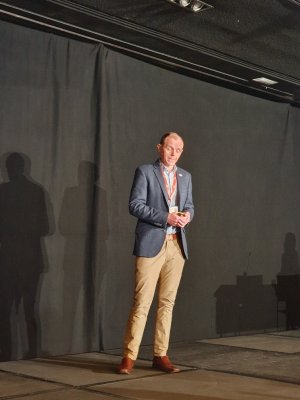 Dr Philip Lyons, Global Manager of Aquaculture Research, presented the eleventh edition of Alltech’s annual feed production survey, which includes data from more than 140 countries and more than 28,000 feed mills. Feed consumption is concentrated in four countries: China, U.S., Brazil, and India. In terms of feed production, this centers around top 10 countries (China, U.S., Brazil, India, Mexico, Russia, Spain, Vietnam, Argentina, and Germany), producing 65% of the worlds feed production. These countries can be viewed as indicators of the trends in agriculture and when combined, the feed production of these countries increased by 4.4%, compared to the overall global growth of 2.3%. Vietnam showed huge growth, entering the top ten with feed production growing by nearly 28% in 2022. Global aquaculture feed tonnage in 2022 increased by 2.72%, with China seeing a 10% increase.
Dr Philip Lyons, Global Manager of Aquaculture Research, presented the eleventh edition of Alltech’s annual feed production survey, which includes data from more than 140 countries and more than 28,000 feed mills. Feed consumption is concentrated in four countries: China, U.S., Brazil, and India. In terms of feed production, this centers around top 10 countries (China, U.S., Brazil, India, Mexico, Russia, Spain, Vietnam, Argentina, and Germany), producing 65% of the worlds feed production. These countries can be viewed as indicators of the trends in agriculture and when combined, the feed production of these countries increased by 4.4%, compared to the overall global growth of 2.3%. Vietnam showed huge growth, entering the top ten with feed production growing by nearly 28% in 2022. Global aquaculture feed tonnage in 2022 increased by 2.72%, with China seeing a 10% increase.
Salmon farming: Great profitability, but where is the growth?
Moving the industry updates, Carl-Emil Kjølås Johannessen from Norway’s Pareto Securities AS presented insight on demand and supply drivers going forward in the salmon farming industry.
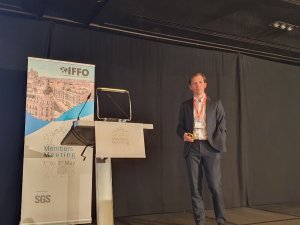 Opening with the increased volatility following the Norwegian Government’s resource tax announcement, he noted that modest supply growth is still expected in the next few years. Demand remains sound with continued high prices and conventional farming regions are still the main growth driver in the short term, however long-term growth is significantly lower without the help of new technologies. These include land based, offshore and closed systems in sea, with land-based farming moving closer to commercial harvest. However, the cost of these technologies will decide in the long run, with many expected to become profitable in the long term.
Opening with the increased volatility following the Norwegian Government’s resource tax announcement, he noted that modest supply growth is still expected in the next few years. Demand remains sound with continued high prices and conventional farming regions are still the main growth driver in the short term, however long-term growth is significantly lower without the help of new technologies. These include land based, offshore and closed systems in sea, with land-based farming moving closer to commercial harvest. However, the cost of these technologies will decide in the long run, with many expected to become profitable in the long term.
Update on the Omega-3 market
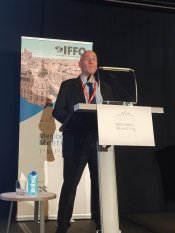 GOED’s Vice President of Data Science, Dr Aldo Bernasconi, next presented an update on the Omega-3 markets, which grew by 1.7% in 2022. This growth is expected to continue at around 2% over the next year, growing fastest in Asia and in the developing markets of Latin America and the rest of the world. The volume of EPA+DHA used by the omega-3 market has grown faster than the volume of ingredient oils, most of the gains in ingredient demand were driven by increases in concentrates, as these oils gradually replace refined oils in the larger, more established markets. In terms of prices, excess production capacity and increased competition has meant that the prices of several common ingredients have remained stable for several years, with producers being reluctant to increase prices. However, with inflation and higher fish oil prices, this became unsustainable, and ingredient prices went up in 2022. This has increased interest in genetically engineered seed oils with EPA and DHA, and public interest in plant-based foods and a larger variety of compositions are helping to bring algal oil-based supplements out of their niche markets.
GOED’s Vice President of Data Science, Dr Aldo Bernasconi, next presented an update on the Omega-3 markets, which grew by 1.7% in 2022. This growth is expected to continue at around 2% over the next year, growing fastest in Asia and in the developing markets of Latin America and the rest of the world. The volume of EPA+DHA used by the omega-3 market has grown faster than the volume of ingredient oils, most of the gains in ingredient demand were driven by increases in concentrates, as these oils gradually replace refined oils in the larger, more established markets. In terms of prices, excess production capacity and increased competition has meant that the prices of several common ingredients have remained stable for several years, with producers being reluctant to increase prices. However, with inflation and higher fish oil prices, this became unsustainable, and ingredient prices went up in 2022. This has increased interest in genetically engineered seed oils with EPA and DHA, and public interest in plant-based foods and a larger variety of compositions are helping to bring algal oil-based supplements out of their niche markets.
Update on fish oil trade
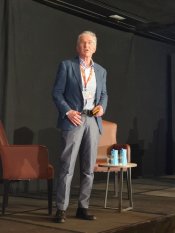 Moving focus to just fish oil, Christian Meinich, Managing Director at Chr. Holtermann AS, noted that since October last year, fish oil prices have climbed sharply from already historically high levels to new historic records. This rise has primarily been supply-driven against inelastic demand, combined with limited alternative sources of EPA and DHA in any volume, at least in the near term. Production prospects for the rest of 2023 also remain a concern, with El Ninõ in the making. Markets could potentially tighten even further as the main feeding period for salmon starts during the second half of the year.
Moving focus to just fish oil, Christian Meinich, Managing Director at Chr. Holtermann AS, noted that since October last year, fish oil prices have climbed sharply from already historically high levels to new historic records. This rise has primarily been supply-driven against inelastic demand, combined with limited alternative sources of EPA and DHA in any volume, at least in the near term. Production prospects for the rest of 2023 also remain a concern, with El Ninõ in the making. Markets could potentially tighten even further as the main feeding period for salmon starts during the second half of the year.
China market update
IFFO’s China Director Maggie Xu presented the update on the China market for the first time in person since the start of the COVID pandemic. Xu noted that China’s domestic fishmeal and fish oil supply is not expected to see substantial growth due to the policy steering, present state of fishery resources, and the struggles currently faced by tilapia processors. However, the fast growing ready-to-cook meal industry is bringing hope for more fishery by-product as raw materials. Imports will continue to be important to fill the gap in domestic supply.
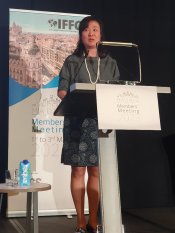 Aquaculture has generally been troubled by overstock in the first quarter of this year, which not only weighed on prices but also delayed the first round of restocking. Pig prices have been slow and extensive losses may negatively impact pig feed production. Pig feed and aquafeed output in the first quarter of 2023 are expected to have moved down when compared to last year. Fishmeal and fish oil demand will therefore likely be in the short term. Economic recovery in the post pandemic era is slowly improving demand for aquatic and pig products. According to security markets analysis, consumer confidence is low at present in China, but expenditure on tourism is rebounding significantly, which in turn will revive the food catering sector.
Aquaculture has generally been troubled by overstock in the first quarter of this year, which not only weighed on prices but also delayed the first round of restocking. Pig prices have been slow and extensive losses may negatively impact pig feed production. Pig feed and aquafeed output in the first quarter of 2023 are expected to have moved down when compared to last year. Fishmeal and fish oil demand will therefore likely be in the short term. Economic recovery in the post pandemic era is slowly improving demand for aquatic and pig products. According to security markets analysis, consumer confidence is low at present in China, but expenditure on tourism is rebounding significantly, which in turn will revive the food catering sector.
Worker welfare in the marine ingredients sector
Discussing this sector’s worker welfare, MarinTrust’s Executive Chair Libby Woodhatch was joined by CEO of Austral Group Adriana Giudice. Environmental concerns first pushed the responsible sourcing agenda and everyone first cared about the fish, but often overlooked the people. It’s true to say many businesses did not take this approach, neither did the UN with the 2007 ILO 188 Work in Fishing Convention and 2011 UN Guiding Principles on Business and Human Rights. Ratification and implementation were slow, and it needed a major market push to drive change in complex global value chains. A 2014 news story, exposing slavery in the Thai fishing fleet did just this, and was a major catalyst for change, not just to meet market expectation and protect reputation, but as a moral obligation.
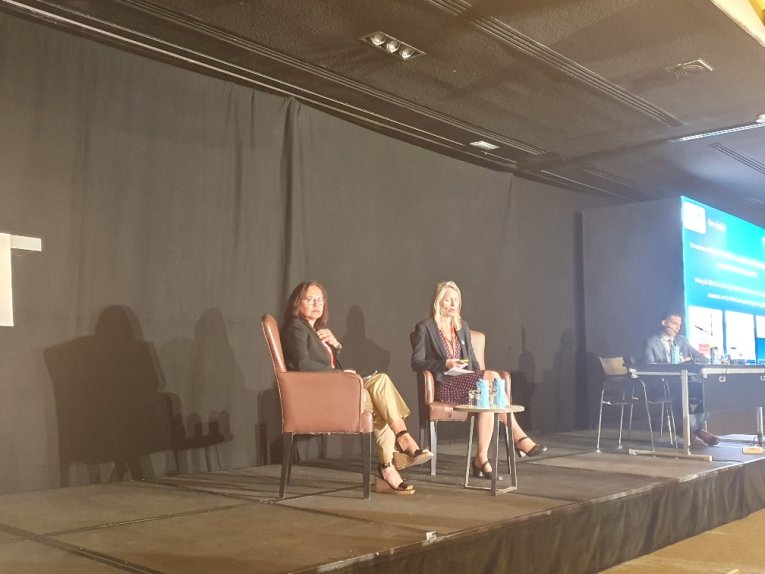 Discussion explored the marine ingredient sector’s journey to improved worker welfare, highlighting the changes that industry has been driving, what has worked and where we need to do more. "We need to start at home, with workers' welfare, not only generating jobs and income, but also positively impacting a wide range of stakeholders" said Adriana. "Being a listed company both in Peru and Norway’s stock exchanges, we have an obligation to provide public reports demonstrating our commitments to Global Compact's ESG policies, also covering our suppliers", she added.
Discussion explored the marine ingredient sector’s journey to improved worker welfare, highlighting the changes that industry has been driving, what has worked and where we need to do more. "We need to start at home, with workers' welfare, not only generating jobs and income, but also positively impacting a wide range of stakeholders" said Adriana. "Being a listed company both in Peru and Norway’s stock exchanges, we have an obligation to provide public reports demonstrating our commitments to Global Compact's ESG policies, also covering our suppliers", she added.








